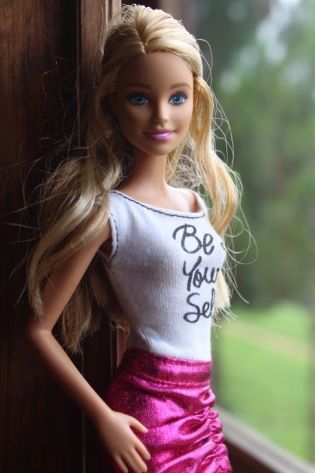In this article, we'll be discussing the wonderful world of films, dolls and trade marks. And after that, we can have a little chat about trade mark oppositions, abbreviations and the importance of vowels.

Image credit: Unsplash
The movie
You may choose to deny it, but the chances are you have seen the much-hyped Greta Gerwig movie, Barbie, which is described in The Guardian as:
"A 114-minute advert for the toy company Mattel...(in fact) the film is not just an advert, it's an advert containing multiple other adverts. It's a Matryoshka of adverts, each one nestled within the next."
If, like us, your business is brands, you'll have been astounded by the movie. We've had to wrap our heads around the fact that the title of one of the biggest movies of the year is the name of an uber famous doll called Barbie and that the owner of that brand, the toy company Mattel, features heavily in the movie. Further, the film is fraught with pretty shameless product placement, which involves a film company allowing companies to have their products featured in the film, for a significant fee.
Third-party brands that feature in the film include Chevrolet, Chanel, TAG Heuer, Birkenstock... even the teaching brand, Duolingo. According to the Guardian, there has been a huge increase in interest in the Chevy Corvette since the movie was released, and TAG Heuer has let it be known that many of its customers now refer to one of its watches as the "Barbie watch".
All of this lends itself to a discussion about the whole gamut of trade marks: trade mark creation, clearance (searching), registration, co-branding, licensing, enforcement, and product placement.
It is essential to make sure that a clearance exercise is conducted before a new trade mark is used or licensed or an existing brand is moved into a new product area. One needs to be alive to the fact that it may be necessary to extend one's registration beyond the main or primary product areas of interest, particularly product areas where licensing or co-branding may take place and to ensure that all the correct (and water-tight) agreements are in place.
Moving on to an interesting and somewhat related trade mark opposition, the fashion company, Burberry, filed an application in the USA to register the trade mark BRBY for clothing and leather goods. Mattel filed an opposition and in its opposition papers, described Barbie as "one of the most recognisable brands in the world". The opposition documents refer to a case in 1991 where the Barbie doll was recognised as the best-selling toy in the world, with an astonishing ownership rate of 96% amongst girls in the USA aged three to eleven.
In its opposition, Mattel argues that BRBY is phonetically identical to BARBIE as it "lacks any vowels to guide the pronunciation, it would likely be read in a manner phonetically identical to Barbie."
Mattel further argues that BRBY "could reasonably be viewed as a subset or expansion of the BARBIE trademarks." It says that Burberry has intentionally chosen the BRBY mark in order to create an association in the minds of those in the marketplace between the Barbie mark" and Mattel. This, Mattel argues, is likely to dilute "the distinctive quality of the Barbie mark". We've noticed that dropping vowels does seem to be becoming a bit of a trend in branding. KNW WHT 'M SYNG!
There is a suggestion that Mattel's notice of opposition was strategically timed to coincide with the film's release. To do this Mattel apparently sought a number of extensions to the opposition term.
There is talk of settlement discussions and it will be interesting to see what happens Until then, Mattel has, in our view, creatively ensured the preservation of Barbie, for now.
The content of this article is intended to provide a general guide to the subject matter. Specialist advice should be sought about your specific circumstances.

